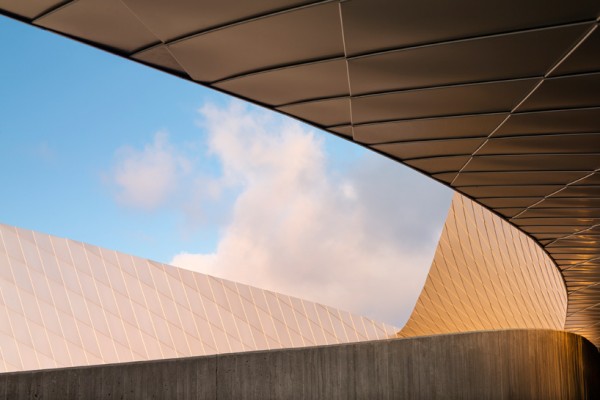Northern Europe’s largest aquarium has just reopened to the public in spanking new digs. This building is not just a destination, it’s a trip. It has to be one of the ten strangest-shaped large public buildings at the moment.
It looks different from every direction, and yet no direction gives you the clear sense of its overall shape. That, you need to see from above. Reactions are mixed as to whether this shape is a marine invertebrate (sea star?) or a whirlpool. The architects make it clear that they were thinking whirlpool—to draw the public into a vortex. The five main wings of the building are called swirls. They’re meant to be expandable in the future.

The Copenhagen Aquarium was founded in 1939 (poor timing indeed) and had been a premier aquarium for several decades, but badly needed a physical update that proved insuperably difficult within its old confines. Therefore it moved out to a suburb, Kastrup, where this new incarnation has a new name, the Blue Planet Aquarium. Early this year, 3,000 animals made the move, and were joined here by 17,000 new ones more or less fresh from the sea.

Danish architects 3xn won the contract to design it through an international competition in 2007. They have plenty of “green” buildings in their portfolio.
Denmark is a world leader in implementing alternative energy, primarily wind. I’m confident that a new big-budget building devoted to a precarious global ecosystem and intended to draw throngs of tourists and to present Denmark on the global stage would be a showpiece of sustainability. And yet … the information I have found so far is light on specifics. There’s LED lighting throughout, rainwater 100% collected for use.



Then there’s something about using the cold sea water for cooling, but it is not clear to what extent this goes beyond the obvious choice of the adjacent body of salt water as the source for cycling new water into the tanks, and that the tank water would not need further mechanical cooling at many times of year … though admittedly it would need mechanical cooling at some times of year. Hmmn.
There is this, on Architectism:
The Blue Planet also tries to raise awareness concerning conservation, excess, endangered species and pollution and does so through information and through its own sustainability solutions.
Sounds like they want me to come see the show in order to learn more. That could be tempting.
